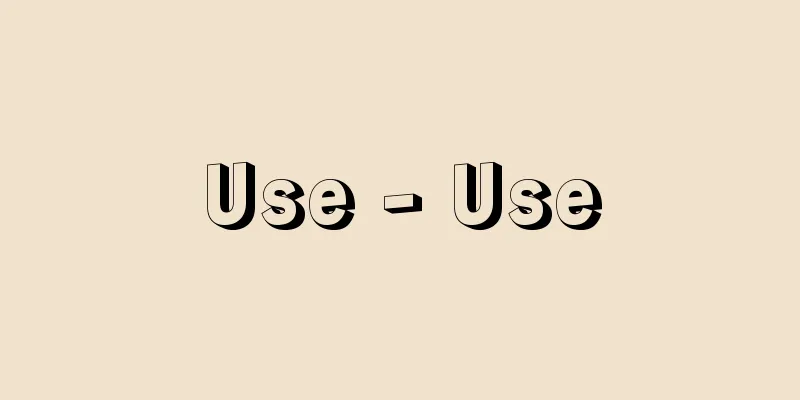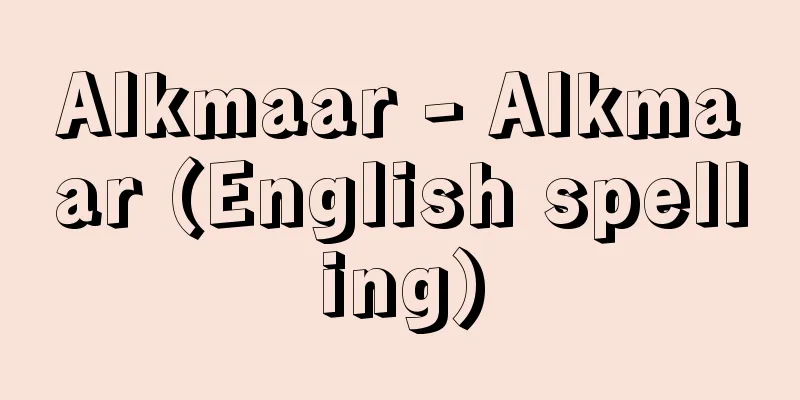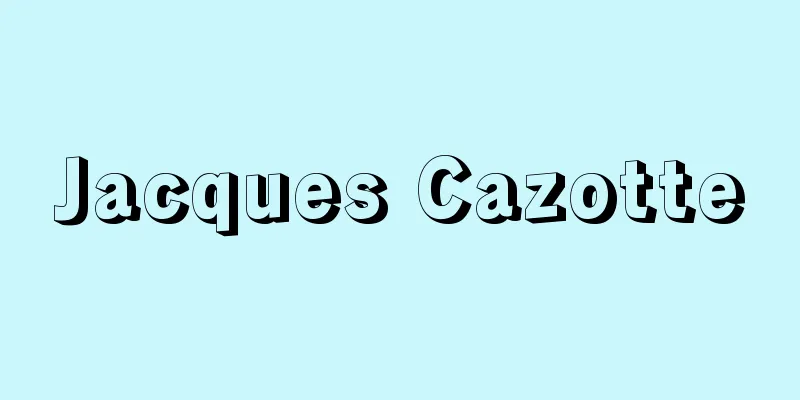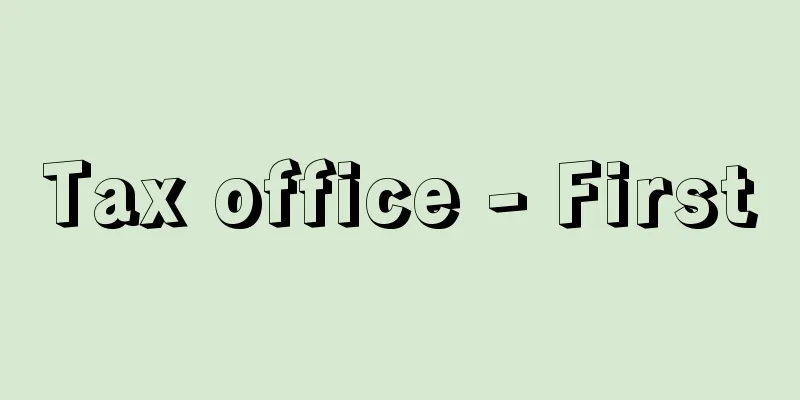Use - Use

|
"Conjugation" refers to the change in form of the same word depending on the difference in the role it plays in a sentence. For example, the word "kaku" (to write) can appear in a sentence in various forms, such as "do n't write a letter," " write a letter and read a book," " write a letter and let him know," " write a letter," "if you write a letter, you'll get a reply," "write a letter quickly," and "let's write a letter." These differences in form correspond to the difference in the grammatical function that the word plays, so they are considered to be the conjugation of the word "kaku," and the various forms that appear there are called "conjugated forms." The part that does not change, such as the "ka" at the beginning of "kaku" (to write), is called the "stem," and the part that changes at the end is called the "conjugated ending." Among conjugated words, the independent words are called "predicates," and the attached words are called "auxiliary verbs," and the two are sometimes collectively called "conjugated words." [Yamaguchi Yoshinori] Conjugation formThe "write" in "tegami wo kaku" ( write a letter) and the "write" in "tegami wo jikanai ga nai" (I don't have time to write a letter) have the same form, but the former is in the infinitive mood and the latter is in the attributive modifier, and they fulfill different grammatical functions, so they are usually considered to be different conjugated forms. However, if we think in this way, the "taka" in "yama wa takaku , umi wa dakau " (taka) in "taka ga naru" (become tall) would seem to be different conjugated forms, with the former in the infinitive mood and the latter in the attributive modifier, but in reality they are both usually treated as conjunctive forms. This is because conjugated words usually have different functions depending on the form, but different functions do not necessarily have different forms. Generally, conjugated forms are divided into six types: "potential form, conjunctive form, infinitive form, attributive form, conditional form (in literary language, the past tense form), and imperative form." This is the result of rearranging the conjugations of literary language, where the words "shinu" (die) and "inu" (go away) have six different forms, "na, ni, nu, nuru, nure, ne," and this is the largest change, so other conjugated words were rearranged based on this. In addition, when a word is only used with a particle or auxiliary verb attached, some people consider the whole to be one word and treat it as one conjugated form. For example, the words " kanai ," " kaku, " and "kakeba" in "tegami o kananai ," "tegami o kankou," and "tegami o kaneba" are considered as conjugated forms of "kaku" (to write), and are called negative forms, intentional forms, conditional forms, etc., and the whole is reorganized. [Yamaguchi Yoshinori] Conjugation patternsThe conjugation forms of verbs can be broadly divided into three types: verb type, adjective type, and adjectival verb type. The verb type has three types: (1) those that change the vowel at the end of the word (such as "kaka, kaki, kaku, kake, kako"); (2) those that add endings such as "ru" and "re" to the invariant part of the word (such as "uke, ukere, ukero"); and (3) those that are a mixture of the above two types (such as "ko, ki, kuru, kure, koi"). In literary language, the conjugation forms are (1) yondan and ra-hen, (2) joichidan and shimoichidan, (3) jonidan, shimonidan, ka-hen, sa-hen, and na-hen. In colloquial language, the conjugation forms are (1) godan, (2) joichidan and shimoichidan, and (3) ka-hen and sa-hen. In literary language, the adjective type can be one where "ku, shi, ki, kere" are added to the stem, such as "yoshi" (good) (ku conjugation), or one where "shiku, shi, shiki, shikere" are added, such as "utsukushi" (beautiful) (shiku conjugation), but in colloquial language there is only one type where "karo, kak, ku, i, kere" are added. In literary language, the adjectival verb type can be one where "nari" is added, such as "shizukanari" (silent) (nari conjugation), or one where "tari" is added, such as "dodotari" (dodotari) (tari conjugation), but in colloquial language there is only one type where "da" is added. The conjugation of auxiliary verbs is generally similar to that of predicates, but there are special types, such as "zu" in literary language and "u, you" in colloquial language. [Yamaguchi Yoshinori] Source: Shogakukan Encyclopedia Nipponica About Encyclopedia Nipponica Information | Legend |
|
同一の単語が文中で果たす役割の違いに応じて、形態を変化させることを「活用」という。たとえば、「書く」という語は、「手紙を書かない」「手紙を書き、本を読む」「手紙を書いて、彼に知らせる」「手紙を書く」「手紙を書けば、返事がくるだろう」「早く手紙を書け」「手紙を書こう」のように、種々の形をとって文中に現れる。これらの形態の差異は、その語の果たす文法的機能の違いに応ずるものであるから、これを「書く」という語の活用とみて、そこに現れる種々の語形を「活用形」とよぶ。なお、「書く」の初頭の「か」のように変化しない部分を「語幹」、末尾の変化する部分を「活用語尾」という。また、活用する語のうち、自立語を「用言」、付属語を「助動詞」といい、両者を総称して「活用語」ということがある。 [山口佳紀] 活用形「手紙を書く」の「書く」と、「手紙を書く時間がない」の「書く」とは、語形が同じであるが、前者は終止法に、後者は連体修飾法にたち、異なる文法的機能を果たすから、別の活用形とみるのが普通である。ただし、そういう考え方をすると、「山は高く、海は深い」の「高く」と、「背が高くなる」の「高く」とは、前者が中止法、後者が連用修飾法で、別の活用形ということになりそうであるが、実際は両方とも連用形として扱うのが普通である。これは、活用語というものが、普通、形が違えば機能も違うが、機能が違えば形も違うというようにはなっていないためである。一般に、活用形を「未然形・連用形・終止形・連体形・仮定形(文語では已然(いぜん)形)・命令形」の6種に分ける。これは、文語の活用を整理した場合、「死(し)ぬ・去(い)ぬ」の語が「―な・―に・―ぬ・―ぬる・―ぬれ・―ね」と、六つの異なる形をとり、これが最大の変化であるために、他の活用語もこれを基準として整理した結果である。なお、助詞・助動詞がついた形でしか用いられないような場合は、全体を1語とみて、一つの活用形として扱おうとする立場もある。たとえば、「手紙を書かない」「手紙を書こう」「手紙を書けば」の「書かない」「書こう」「書けば」などは、全体を「書く」の活用形とみて、否定形、志向形、仮定形などとよばれることになり、全体が再編成されることになる。 [山口佳紀] 活用の型用言の活用形式は、大別して動詞型、形容詞型、形容動詞型の3種に分けられる。動詞型には、(1)語末の母音の交替によるもの(「書か・書き・書く・書け・書こ」など)、(2)不変部分に対する語尾ル・レなどの添加によるもの(「受け・受ける・受けれ・受けろ」など)、(3)上記2種の混合によるもの(「来(こ)・来(き)・来(く)る・来(く)れ・来(こ)い」など)の三者がある。文語では、(1)四段・ラ変、(2)上一段・下一段、(3)上二段・下二段・カ変・サ変・ナ変となる。口語では、(1)五段、(2)上一段・下一段、(3)カ変・サ変となる。形容詞型は、文語では、「良し」など語幹に「く・し・き・けれ」を添加するもの(ク活用)と、「美し」など「しく・し・しき・しけれ」を添加するもの(シク活用)とがあるが、口語では「かろ・かっ・く・い・けれ」を添加するもの1種である。形容動詞型は、文語では、「静かなり」など「なり」を添加するもの(ナリ活用)と、「堂々たり」など「たり」を添加するもの(タリ活用)とがあるが、口語では「だ」を添加するもの1種である。助動詞の活用は、だいたい用言のそれに似るが、文語「ず」、口語「う・よう」のように、特殊型がある。 [山口佳紀] 出典 小学館 日本大百科全書(ニッポニカ)日本大百科全書(ニッポニカ)について 情報 | 凡例 |
<<: Summary calculation method
>>: Katsuyama [village] - Katsuyama
Recommend
Glyoxysome
…After one cycle of this cycle, two hydrogen atom...
River channel
〘 noun 〙 The area of a river that is within the ...
Kinh (Kyoto) people
Vietnamese living in the southern tip of the Guang...
Armenian Massif - Armenian Massif
...The area in which they once lived as the prima...
On Oq (English)
In 583, the Western Turks became independent and ...
Cormorant Stage - Unodan
...The old man reveals that he is actually dead a...
Olfactory gland
→Bowman's gland Source: Asakura Publishing Nut...
episode film
...A film that is made up of independent short ep...
Giorgi, G. (English spelling) GiorgiG
…A type of unit system belonging to the metric sy...
Number - Bante
[1] 〘 noun 〙① A warrior who is stationed at a cast...
Chahamana (English spelling)
…A dynasty in the Rajasthan region of India, coun...
Rochas, ABde (English spelling) RochasABde
…In 1872, he welcomed G. Daimler and W. Maybach t...
Koshi - Drum
Narrative music performed mainly in northern China...
Nonprotic solvent
...A solvent that contains proton-donating groups...
Basal metabolism
The metabolism during waking and complete rest (b...









